Bidding on a project without a shot list means you cannot know the exact costs for expenses, and you will be concepting the creative shot list. When you are wearing more hats, you need to charge for your time and call it a CREATIVE CONCEPTING FEE.
Negotiating
Don’t Hold Back in Stating Your Case
Clients don’t always have all the facts when we are bidding a job, leading us to under-bid certain areas. If more responsibility falls into your lap than expected, don’t hold back in stating your case to request more $. Clients know that some gray areas may result in an overage, but they need us to be the ones to ask for it.
Sometimes we bid on projects where we don’t have all the information yet, and the client may not have all the details either, leading to many assumptions. We should include “TBD” (to be determined) on those line items in our bid to protect ourselves. Even if we don’t include them, once the job is awarded and more responsibilities shift to us that were initially thought to be handled by the client, don’t hesitate to ask for additional funds. Address any new needs or changes directly with the client—don’t get frustrated. Often, they will understand because the situation was unknown at the time. Request more prep days, additional tech scout days if needed, extra post time, or anything else necessary. Remember, just because the bid is awarded doesn’t mean you have to absorb these changes without discussing them.
Choose Your Words Wisely
Admit it; you are SELLING a product. Approach the conversations with a potential client as a LISTENER, ready to open the pathway to let your true purpose be heard. Choose your words wisely instead of filling any space. Trust me; there won’t be much empty space.
Shared Usage Rights
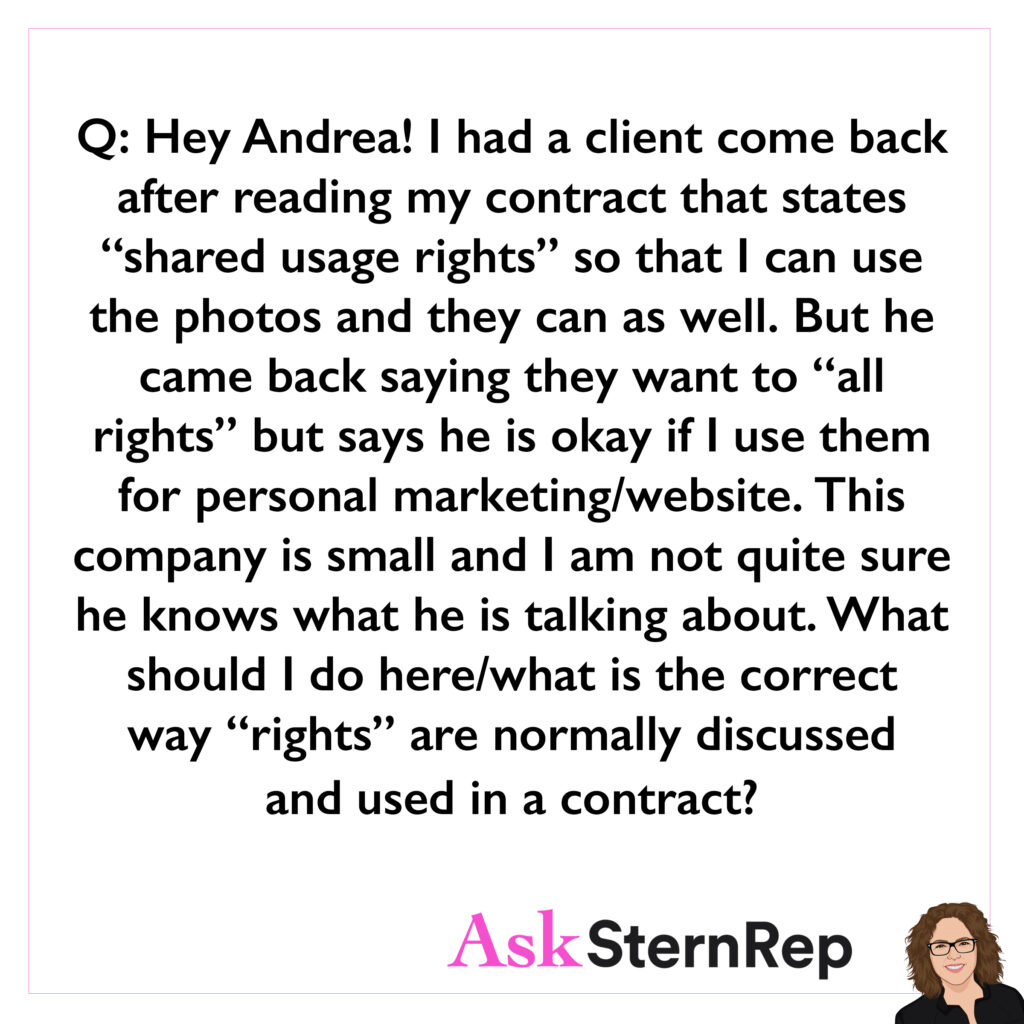
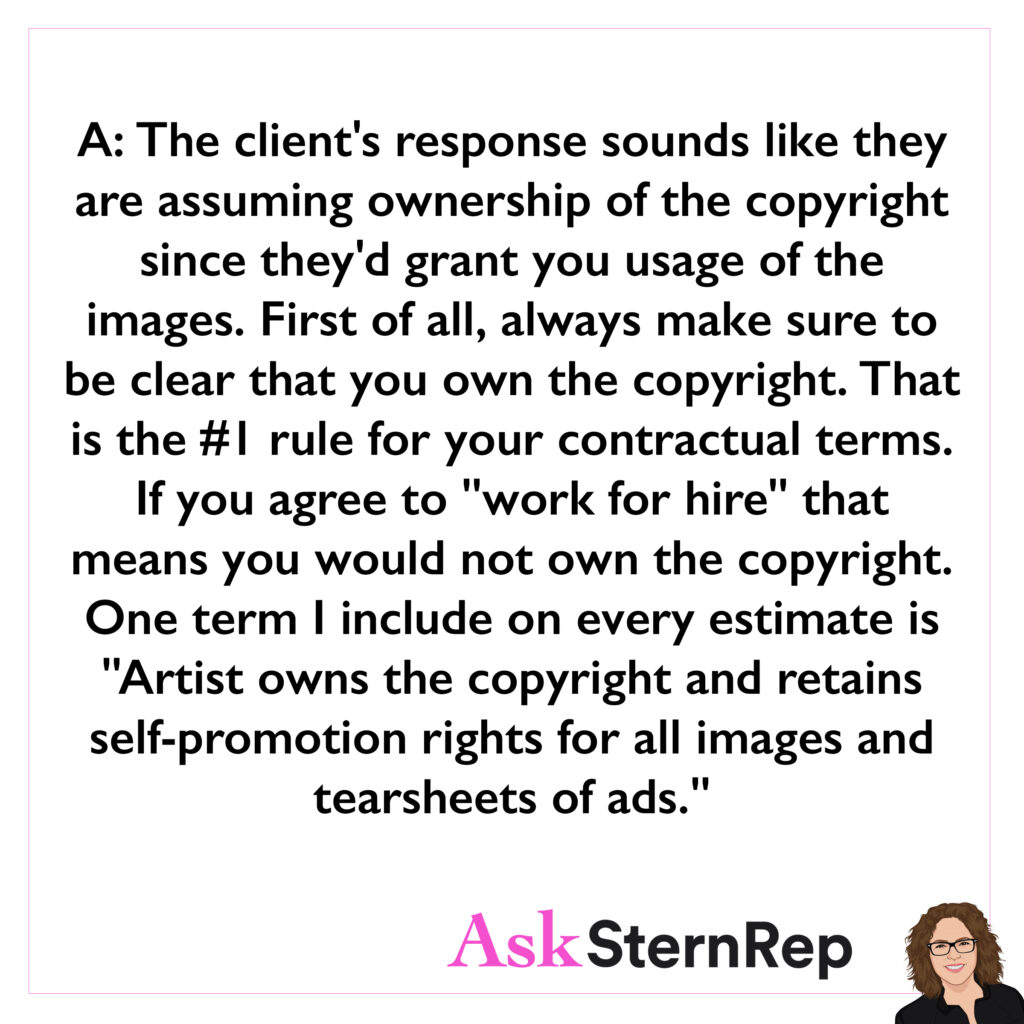
Q:
Hey Andrea! I had a client come back after reading my contract that states “shared usage rights” so that I can use the photos and they can as well. But he came back saying they want to “all rights” but says he is okay if I use them for personal marketing/website. This company is small and I am not quite sure he knows what he is talking about. What should I do here/what is the correct way “rights” are normally discussed and used in a contract?
A:
The client’s response sounds like they are assuming ownership of the copyright since they’d grant you usage of the images. First of all, always make sure to be clear that you own the copyright. That is the #1 rule for your contractual terms. If you agree to “work for hire” that means you would not own the copyright. One term I include on every estimate is, “Artist owns the copyright and retains self-promotion rights for all images and tearsheets of ads.”
Where are we right now and what do we need to do? // Navigating the Unknown Episode 17
Navigating the Unknown Episode 17 – Where are we right now and what do we need to do? Is now live on YouTube! This week we speak to Producer Joy Asbury and Producer Michael Horta about where our industry is headed now.
Guests:
Joy Asbury – Producer, joy Asbury Production https://joyasbury.com/
Michael Horta – Producer, MJ68 Productions http://www.mj68.com/
Navigating the Unknown is a Q&A series in collaboration with APA-LA where we speak to different members of the photo community about all aspects of the commercial photography business. https://la.apanational.org/
With Co-Host: Photographer Hugh Kretschmer https://www.hughkretschmer.net/
Overages + Estimates
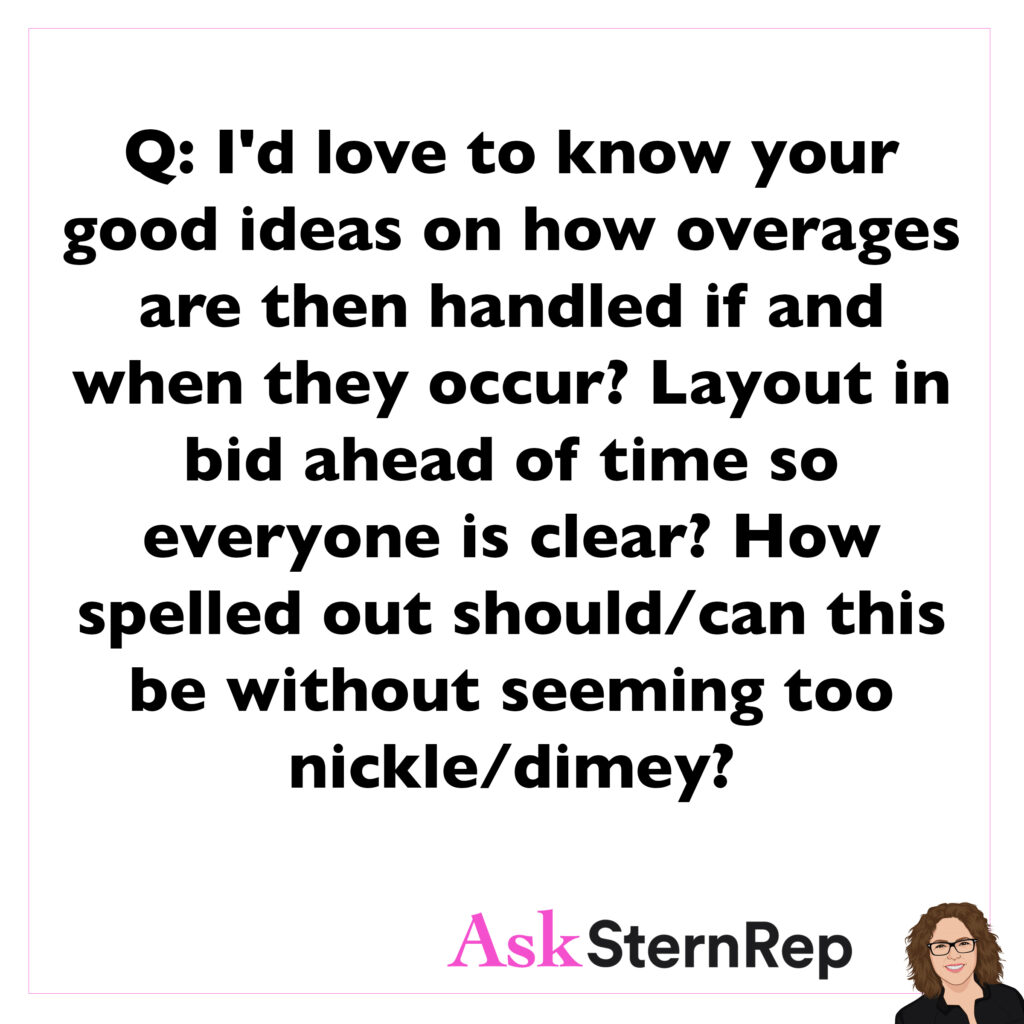

Q:
I’d love to know your good ideas on how overages are handled and if and when they occur? Layout in bid ahead of time so everyone is clear? How spelled out should/can this be without seeming too nickel/dimey?
A:
Overages can be simple if your estimate states what the bid includes. I would not worry about sounding too “nickel/dimey,” but too much unneeded info only prevents the needed info from being read. Less is more if we want to be heard. State on the estimate form job description and listed in your email when sending in the estimate what is included and what is not included. Things like retouching, shoot hours, variations, stylists, which props, how many locations, etc., should all be stated, so it’s easy to get overages approved before they occur. Remember, “before they occur” is extremely important as clients need to be a part of the process before granting a financial overage approval.
Usage + Pricing

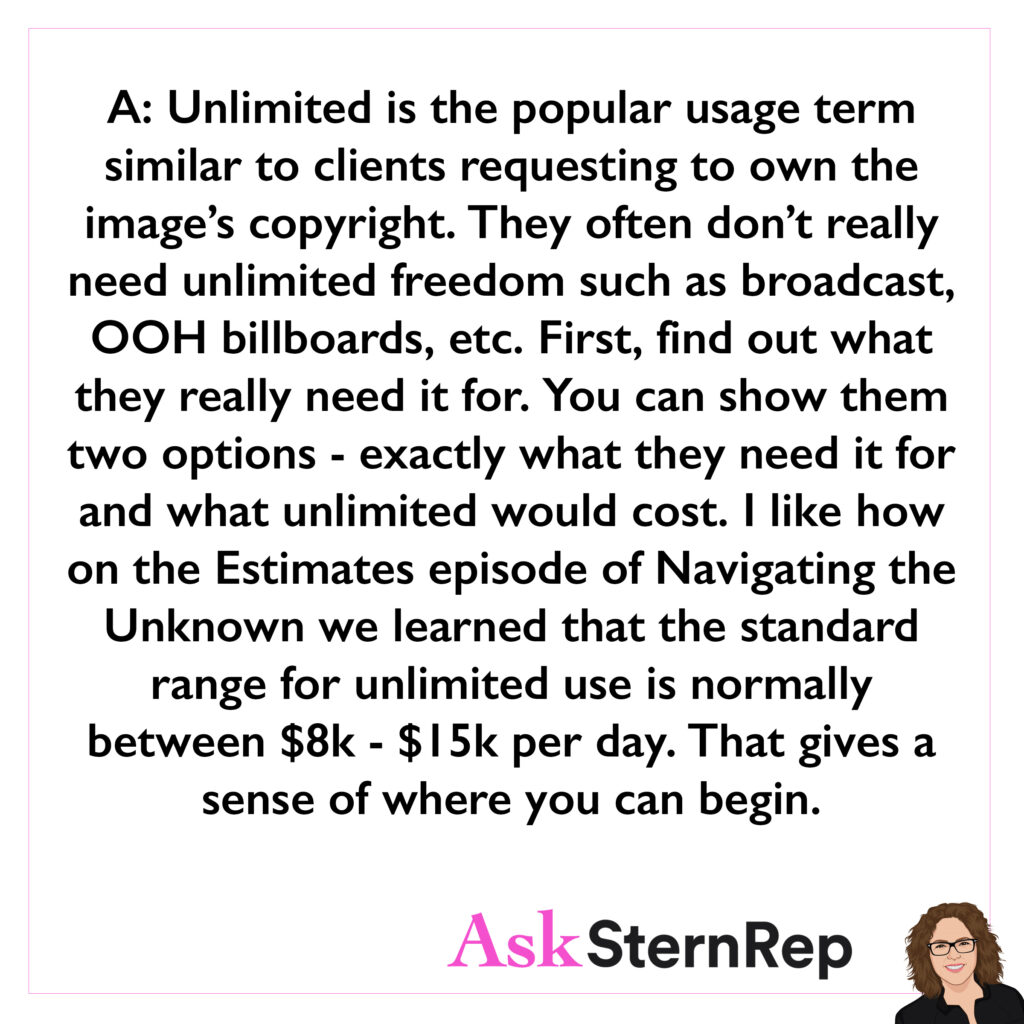
Q:
How do you navigate pricing for unlimited use for images? I’ve had so many requests this year for buy-outs.
A:
Unlimited is the popular usage term similar to clients requesting to own the image’s copyright. They often don’t really need unlimited freedom such as broadcast, OOH billboards, etc. First, find out what they really need it for. You can show them two options – exactly what they need it for and what unlimited would cost. I like how on the Estimates episode of Navigating the Unknown we learned that the standard range for unlimited use is normally between $8k – $15k per day. That gives a sense of where you can begin.
Shot List On-Set
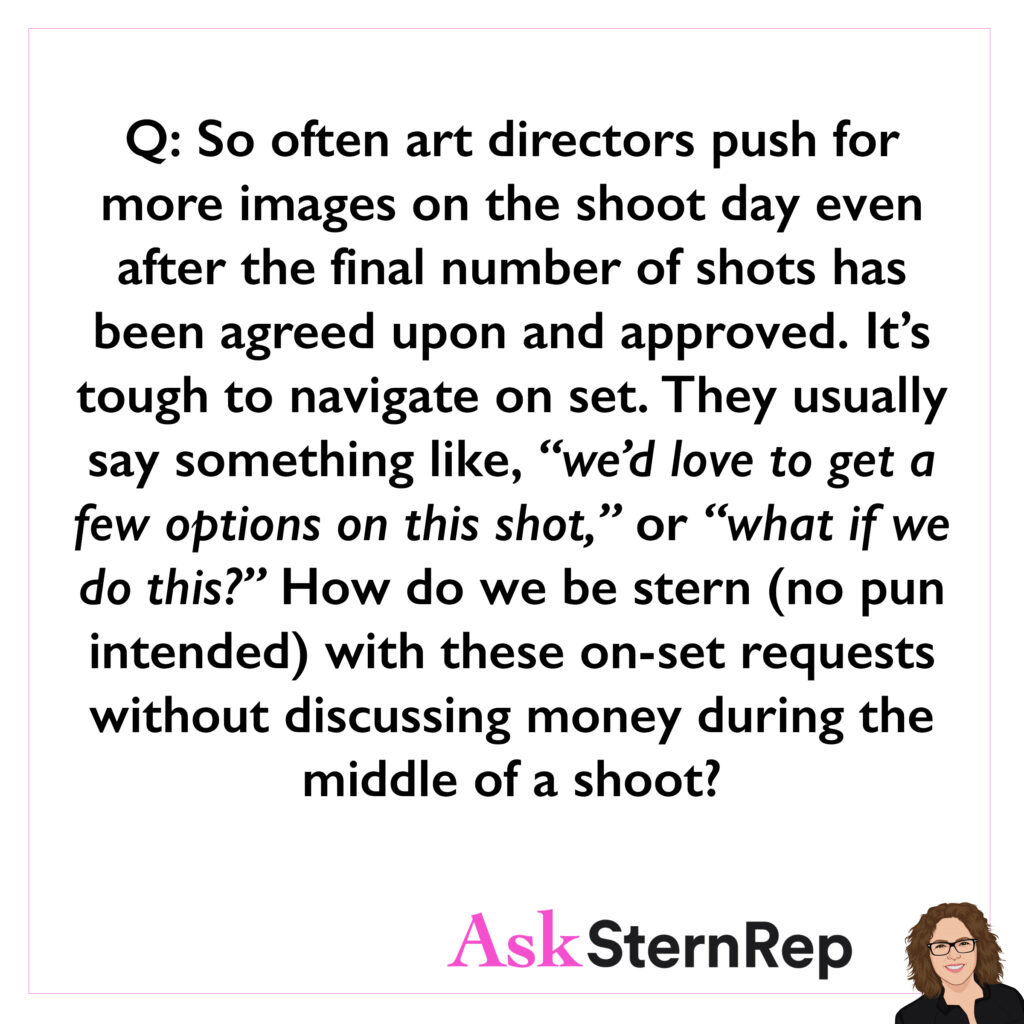

Q:
So often art directors push for more images on the shoot day even after the final number of shots has been agreed upon and approved. It’s tough to navigate on set. They usually say something like, “we’d love to get a few options on this shot,” or “what if we do this?” How do we be stern (no pun intended) with these on-set requests with discussing money during the middle of a shoot?
A:
I tell every photographer I rep or temp rep to blame me. For example- “I’d love to do this for you, but Andrea had me agree that you’ll have to talk to her first.” If you aren’t working with a rep then you can say, “As much as I’d love to, it’s my self-producing policy to not surprise you or me later with costs and timing issues so I’ll get back to you in a few minutes with any cost or scheduling changes to make those happen.”
Ghosted
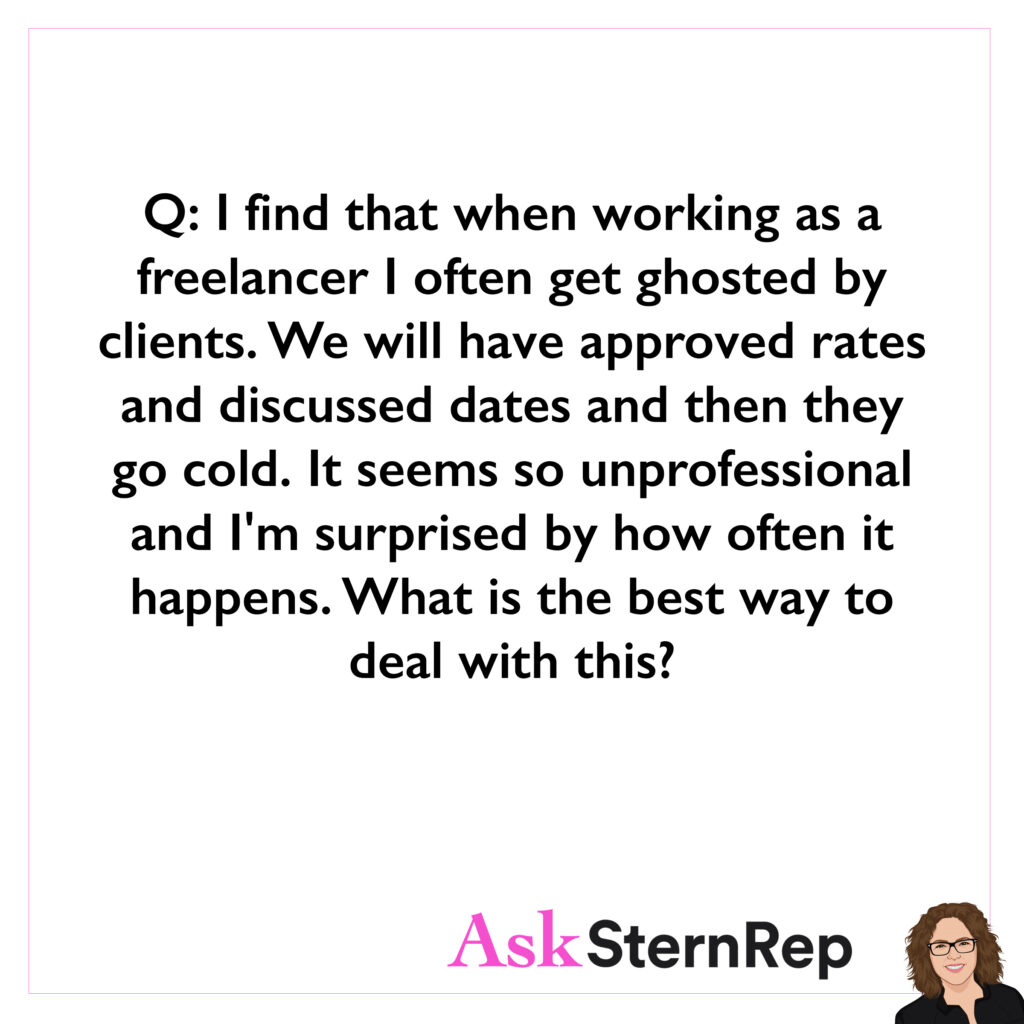

Q:
I find that when working as a freelancer I often get ghosted by clients. We will have approved rates and discussed dates and then they go cold. It seems so unprofessional and I’m surprised by how often it happens. What is the best way to deal with this?
A:
Ya I hear you. This procedure is they reach out to about 10 photographers and then their creative choose 3 of them to bid the job. It can be misleading as it isn’t presented as an initial round up of available photographers. I email them back after not hearing anything for a few days, asking if we should keep the hold. That is when I get a response because they don’t really want us losing other jobs and holding the dates.
Bidding + Temp Rep
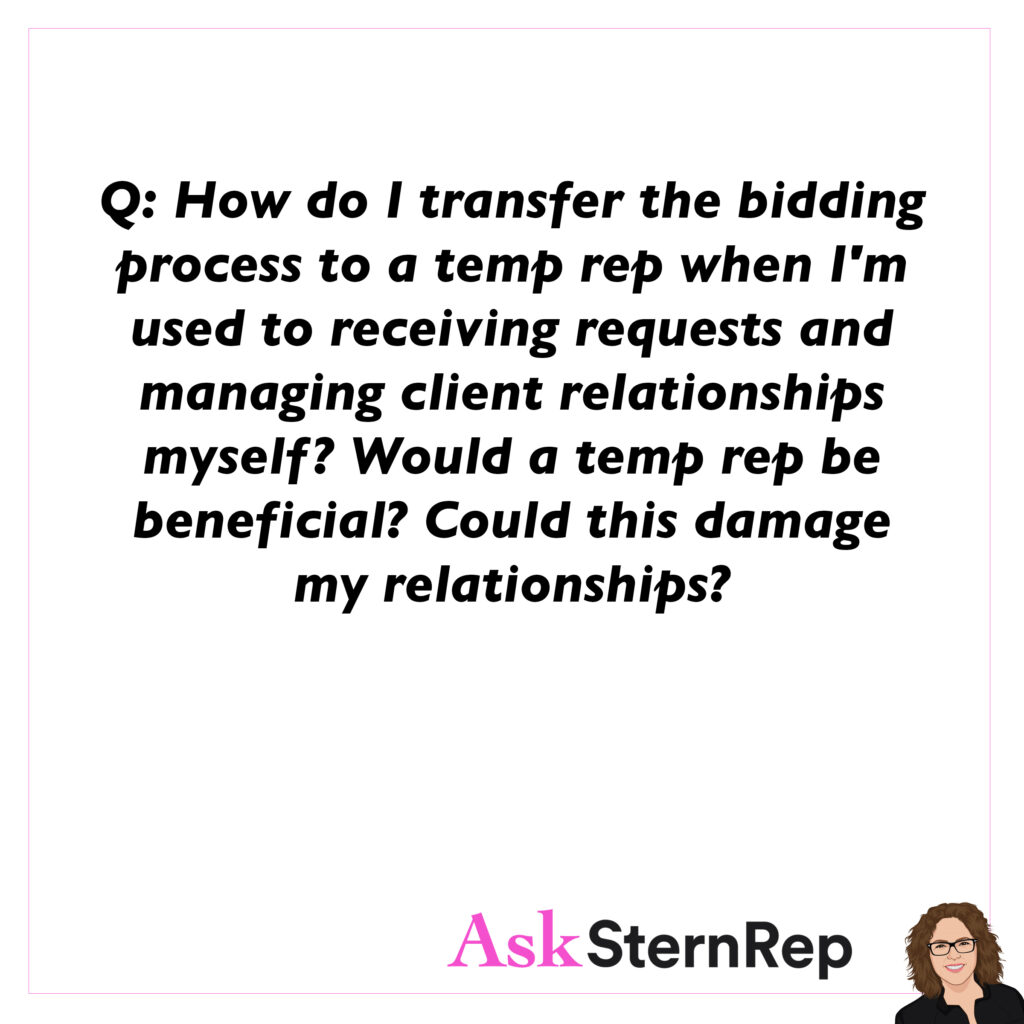
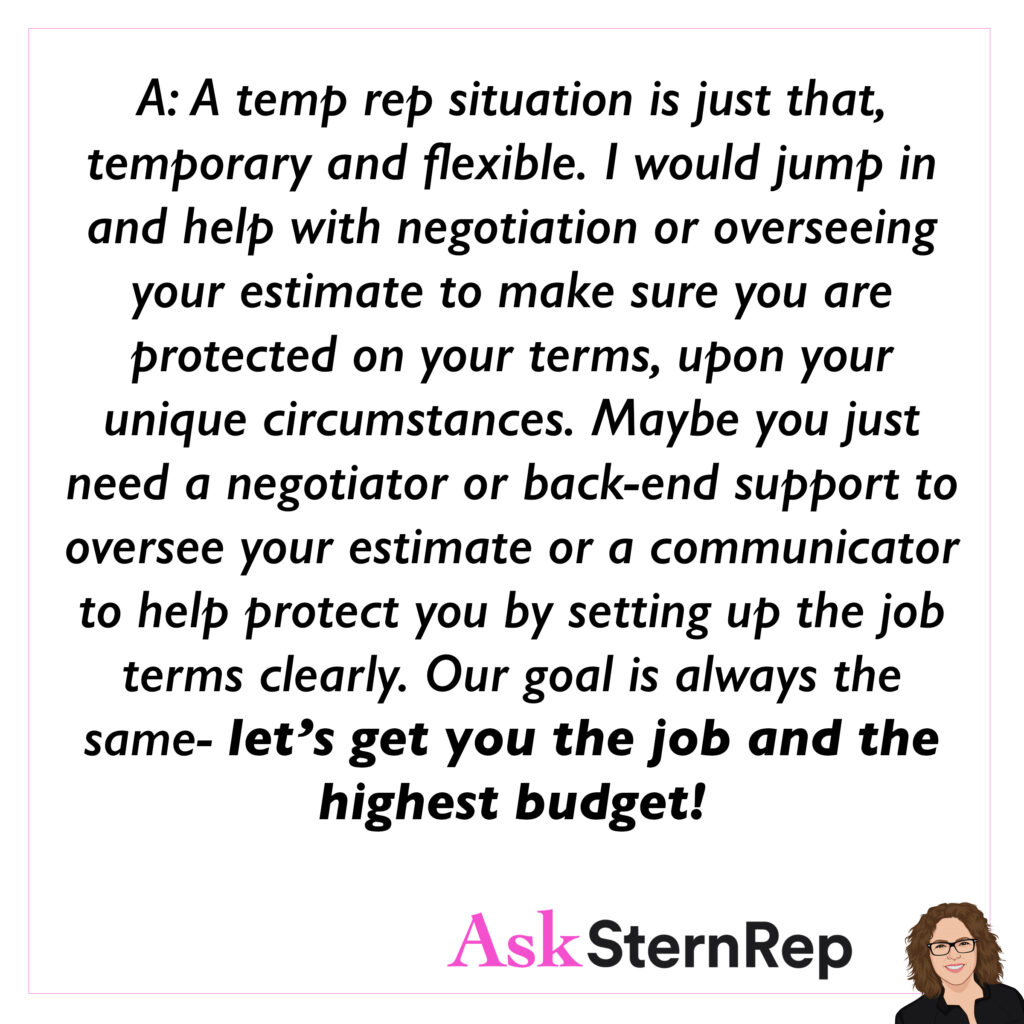
Q:
How do I transfer the bidding process to a temp rep when I’m used to receiving requests and managing client relationships myself? Would a temp rep be beneficial? Could this damage my relationships?
A:
A temp rep situation is just that, temporary and flexible. I would jump in and help with negotiation or overseeing your estimate to make sure you are protected on your terms, upon your unique circumstances. Maybe you just need a negotiator or back-end support to oversee your estimate or a communicator to help protect you by setting up the job terms clearly. Our goal is always the same- let’s get you the job and the highest budget!
